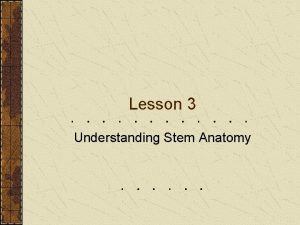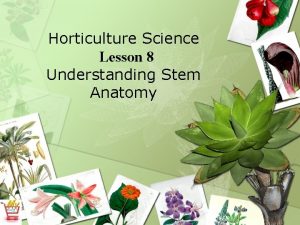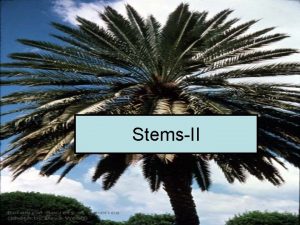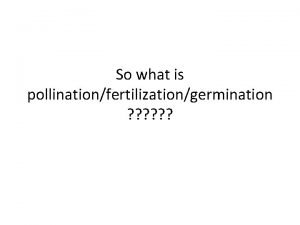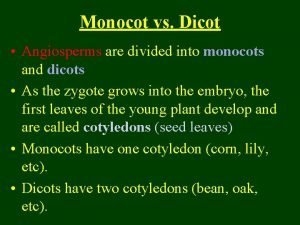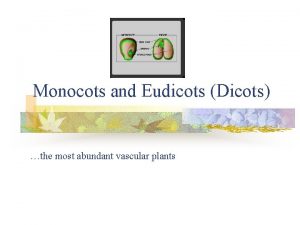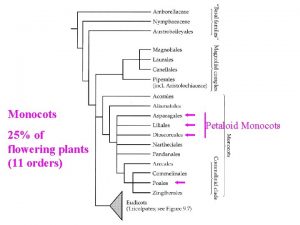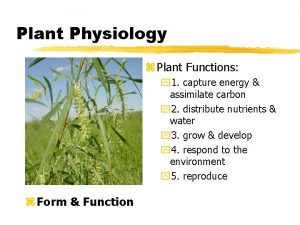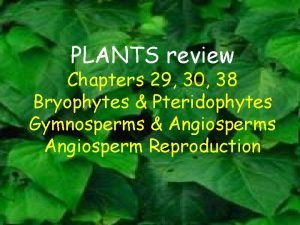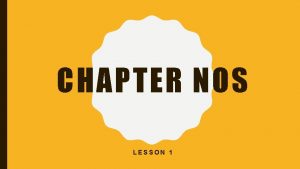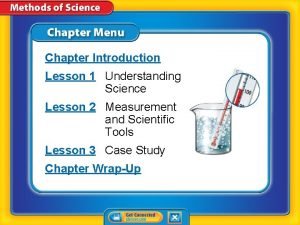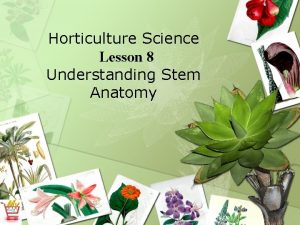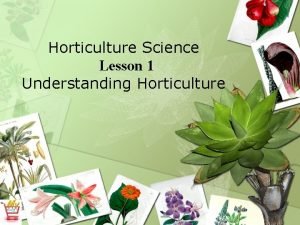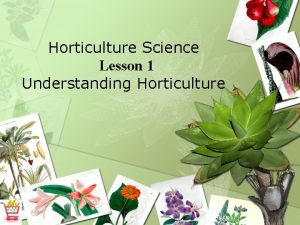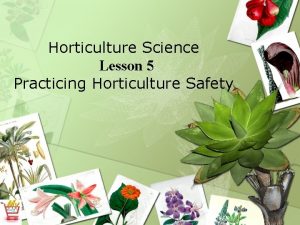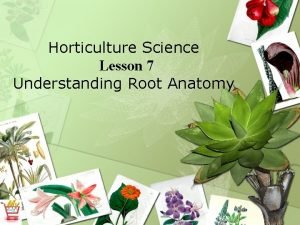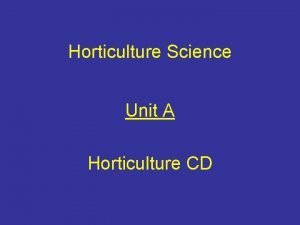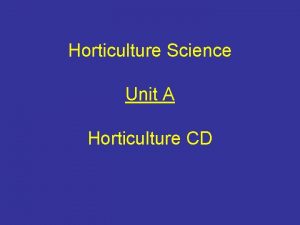Horticulture Science Lesson 8 Understanding Stem Anatomy Monocots



















- Slides: 19

Horticulture Science Lesson 8 Understanding Stem Anatomy

Monocots vs. Dicots • Way we classify plants • Monocot seeds have one seed leaf, Dicots have two seed leaves. • Monocots parts are in multiples of 3, dicots are in multiples of 4 or 5. • They also have different stem systems.



What are the functions of a stem? • Stems move water and minerals up from the roots to the leaves. • They also move food made from photosynthesis down to the roots.

How? • Water molecules are attracted to each other like magnets. • This is called COHESION. • Water molecules in plants travel through the XYLEM, a tube that runs through the stem by cohesion.

Function of a Stem • Stems leaves collect • Stems support the leaves. They hold the in the most efficient position to sunlight. are also used for food storage.


External Parts of a Stem • Lenticels- breathing pores • Terminal Bud- The end of the stem where growth is taking place. • Bud scale scars- Indicates a terminal bud has been located there. – Distance between the two shows one year of growth

– The leaf is attached to the stem at the node. – The area between leaves is called an internode. – At the node, just above where the leaf is attached, there is always a side bud called the lateral bud.

– On the outside of both terminal and lateral buds are small protective structures called bud scales.

– When the leaf falls off of the stem, it leaves behind a small scar just below the lateral bud. • This scar is called the leaf scar.

Internal Structures of a Stem • In MONOCOTS the stem structure is in bundles.

Internal Structure of a Stem • In dicots, the structure is made of rings.

Internal Structure • Xylem- Water and nutrients move UP the plant from the roots to the leaves through cohesion. • Phloem-Food and energy manufactured through photosynthesis moves from the leaves to the roots.

Internal Structure • Cambium-Builds new xylem and phloem cells. • In dicots, this causes the plant go grow in girth…. trees! • In monocots, the cambium doesn’t circle the outside of the plant, so it doesn’t continue to grow past maturity.

The Pith • The pith is the very center of the stem, it is from the Old English word meaning, “pit of the fruit”

Review • What is one way we classify monocots and dicots differently? • What is the function of the lenticels? • What is the process called that helps water travel upward through the xylem? • What is the purpose of the phloem? • What does the cambium do?

Task: Dissect a Flower! • You will need: white paper, flower, tape, marker, and a knife. • Cut the flower in half. • With one half, remove a petal, a stamen and pistil. Tape over it, label them and describe their function and the process of pollination. • Tape the other half to your paper and label the same parts, but also the sepal and any parts of the stem you can identify.
 Understanding stem anatomy
Understanding stem anatomy Moving flower lesson 8
Moving flower lesson 8 Lesson outline lesson 1: understanding science answer key
Lesson outline lesson 1: understanding science answer key Primary thickening meristem
Primary thickening meristem Difference between monocot and dicot
Difference between monocot and dicot Monocots eudicots
Monocots eudicots Vascular
Vascular Monocots and eudicots
Monocots and eudicots Petaloid monocots
Petaloid monocots Kolateral terbuka dan tertutup
Kolateral terbuka dan tertutup Intercalary meristem
Intercalary meristem Z plant
Z plant Monocots vs dicots
Monocots vs dicots Bryophytes pteridophytes gymnosperms and angiosperms
Bryophytes pteridophytes gymnosperms and angiosperms Lesson 2 measurement and scientific tools answer key
Lesson 2 measurement and scientific tools answer key Lesson 2 measurement and scientific tools
Lesson 2 measurement and scientific tools International society of horticultural science
International society of horticultural science Hq of international society for horticultural science is at
Hq of international society for horticultural science is at My favorite subject is...
My favorite subject is... What is the function of a stem in a plant
What is the function of a stem in a plant
